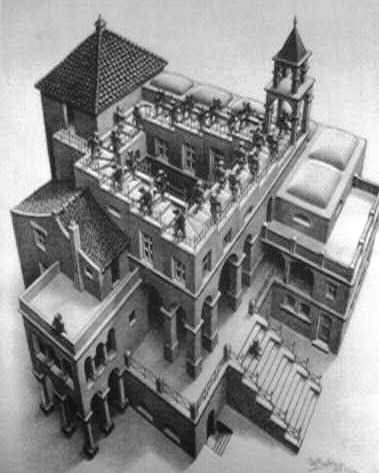Op art, also known as optical art, is a genre of visual art that makes use of optical illusions. Optical Art is a mathematically-themed form of Abstract art, which uses repetition of simple forms and colors to create vibrating effects, moiré patterns, foreground-background confusion, an exaggerated sense of depth, and other visual effects.
The term "Op Art" first appeared in print in Time magazine in October 1964, though works which might now be described as "op art" had been produced for several years previously. Op art works are abstract, with many of the better known pieces made in only black and white. When the viewer looks at them, the impression is given of movement, hidden images, flashing and vibration, patterns, or alternatively, of swelling or warping.
In a sense, all painting is based on tricks of visual perception: manipulating rules of perspective to give the illusion of three-dimensional space, mixing colors to create the impression of light and shadow, and so on. With Optical Art, the rules that the viewer's eye uses to try to make sense of a visual image are themselves the "subject" of the artwork. Op Art has been given a life-span of around three years. This doesn't mean, though, that every artist ceased employing Op Art as their style by 1969.
